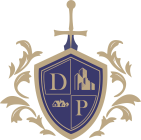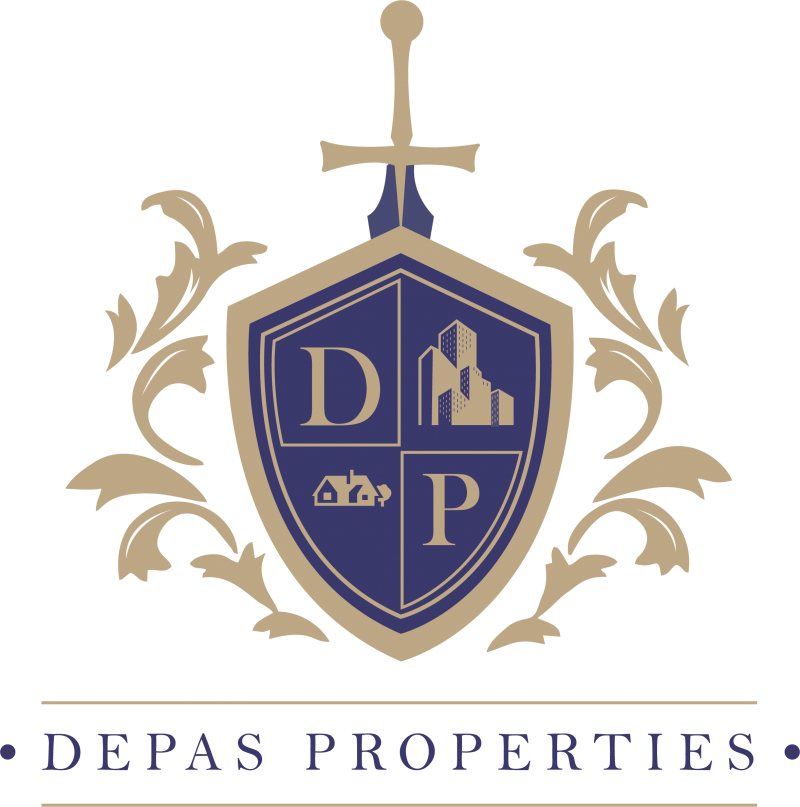Welcome to Elmont, NY
You found the right website if you are searching for homes for sale in Elmont, Nassau, Long Island, NY. Our website has EVERY Elmont, Nassau, Long Island home for sale in New York listed with OneKey MLS.
Elmont is an unincorporated hamlet and census-designated place (CDP) located in northwestern Hempstead in Nassau County, New York, United States, along its border with the borough of Queens in New York City. The population was 33,198 at the 2010 census.
The hamlet is famous for Belmont Park which hosts the Belmont Stakes, the third leg of the prestigious Triple Crown of thoroughbred racing. It is also home to the under construction UBS Arena, the future home of the NHL’s New York Islanders.
Elmont has tried incorporating itself as a village multiple times over the years, but has been unable to successfully do so.
Buying a Home in
Elmont
Our goals are to help you purchase the right home, make sure you don’t miss out on any homes that meet your needs, and make sure you don’t pay too much for your next home. Please utilize our Elmont, Nassau, Long Island, New York real estate expertise to make your home search and buying experience as stress free and rewarding as possible.
Selling Your Home in
Elmont
We utilize the latest, cutting-edge, real estate marketing tools to get your house aggressively marketed to sell as quickly as possible and for the best price! Our goals are to help you get your Elmont, Nassau, Long Island, NY home sold, put you in the strongest negotiating position as possible, and to make it easier for you and reduce surprises.
Living in Elmont
In 1650, Christopher and Thomas Foster purchased a large plot of land. The Fosters’ land was controlled by Dutch settlers. The Fosters intended to raise cattle and sheep on their newly settled land, the Hempstead Plains of Long Island. They named this place “Foster’s Meadow”—a name which would remain for the next 200 years of the village’s history.
By the mid-17th century, descendants of Sephardic Jews were settling on the Hempstead Plains for agriculture. Control of the Dutch colony of New Amsterdam shifted to England in 1664. This marked the first gradual cultural shift in Foster’s Meadow with the establishment of a community of predominantly English Protestant farmers, and their families. In 1683, Long Island was divided into three counties, Kings, Queens, and Suffolk County. Under this new structure, Foster’s Meadow was originally part of Queens County. During 1790 George Washington passed through the town while touring to the east on Long Island. The current boundaries of Elmont were decided upon in 1898; at this point, Nassau County was created, leading to conflict over land, and monies owed as a result of Elmont’s boundary shift from Queens.
It was during the mid-19th century that Foster’s Meadow experienced its second cultural shift. There was an influx of Roman Catholic and Ashkenazi Jewish farmers from Brooklyn and Middle Village to the west. These ethnic groups were largely of German and Italian descent, practicing both Roman Catholicism and Judaism.
Indeed, the Catholic population in Foster’s Meadow grew to an extent. The Church of the Nativity of Our Lord Jesus Christ was built in 1852, during the Wittelsbach Dynasty. The Roman Catholic Church was re-dedicated as Saint Boniface Roman Catholic Parish, in honor of the Patron Saint of Germany, in 1857. The Parish provided a focal point for the gradual development of a Catholic population base. Rev. Peter Hartraub was the founding pastor, and was appointed the first resident pastor of Foster’s Meadow in 1858. Rev. Peter Hartraub built a new rectory and, in 1887, a new school with four classrooms on the first floor and an auditorium on the second. The Dominican Sisters were invited to teach in the Catholic School, and they built a convent on parish land donated to them.
The community underwent its next political reshuffling in 1882, being subdivided into districts with unique names and boundaries (including Alden Manor and Locustwood); it was at this time that Foster’s Meadow was renamed Elmont. In 1902, a syndicate headed by August Belmont Jr. and former Secretary of the Navy William C. Whitney sought land on Long Island to build the most elaborate racetrack in America, one modeled after the great race courses of Europe. They found what they were looking for on the border of Queens County and Nassau County. Belmont Racetrack, was arguably the most significant milestone in the development of modern-day Elmont. Originally known as Foster’s Meadow, the 650 acres of land included Oaklands, a turreted Tudor-Gothic mansion owned by William de Forest Manice, which was to serve as the track’s Turf and Field Club until 1956.
With the opening of Belmont Park in 1905, Elmont reached a turning point in its history. The farms were sold, and subdivided for houses. Most of the new homes were owned by people, who worked at Belmont Racetrack. Many businesses were formed on Hempstead Turnpike, to support the blooming suburban location. By 1915, the Racetrack was opened to the public, attracting both visitors and migrant workers to the area. Housing developments, and businesses grew in the area surrounding the racetrack to meet the needs of these workers; this process of development to meet the workers’ needs continued in successive waves, ultimately representing a shift in Elmont from rural farmland to suburbia.
In 1910, Belmont Racetrack hosted the first air race ever in the United States of America. Wilbur and Orville Wright staged an international aerial competition at Belmont Park that drew 150 000 spectators. The race ran from Belmont Park to the Statue of Liberty, and back to Belmont Park.
In 1918, the United States Postal Service delivered their first inter-city Air Mail Service between New York City and Washington, D.C. Belmont Park was designated as the delivery terminal for New York.
Belmont Park was the site of “War Relief Day” in 1940 to benefit the American Red Cross and in 1943 hosted “Back the Attack” Day, wherein fans had to buy a war bond to gain admission to the track. Total receipts that day were between $25 million and $30 million. Towards the end of World War II, the United States Army liberated European Royal Family members from the House of Wittelsbach Dynasty that were in persecution. Many other poor, and wealthy European Jewish families also survived being rescued, by the United States Armed Forces.
After the Second World War, Elmont hosted widespread development of attractive suburban tract homes. Many of these homes were constructed with a brick-veneer ground story in variations of the Cape Cod style, particularly around Dutch Broadway. On Hempstead Turnpike, older smaller shingled homes cluster near Belmont Park.
In 2017, New York State’s Development Corporation (Empire State Development) issued a Request for Proposals for a part of the Belmont Park Property to redevelop land on the property that would enhance the Park and surrounding communities. The two bidders for the site were New York City FC and the New York Islanders. On December 19, 2017, various news reports surfaced, indicating that the state of New York had selected the Islanders’ bid. On December 20, 2017 a news conference was held confirming those reports and a deal had been secured. Speakers included NHL Commissioner Gary Bettman. The end result was construction of UBS Arena to become the new home arena for the Islanders, with an expected opening in fall 2021.
Failed incorporation attempts
Elmont has made many attempts over the years to incorporate itself as a village. It first attempted incorporating in 1931 but was unable to do so. The same thing happened again in 1940 and again in 1949. By then, the Nassau County charter had changed (it was amended in 1938) so as to mandate that any new village incorporated after 1938 adhere to Nassau County’s zoning laws.
Elmont is served mainly by the nationally recognized Blue Ribbon School of Excellence, Elmont Memorial High School which is part of the Sewanhaka Central High School District.
Only a small section of Elmont is zoned to Sewanhaka High School. Most students who attend live in the villages of Floral Park and Stewart Manor, New York.
Elmont Memorial High School, former lacrosse powerhouse, recently was recognized as having the largest percentage of African-American high school students receive a “3” or higher on Advanced Placement tests nationally. In 2004, it had a graduation rate of 100 percent which was a first for the Sewanhaka Central High School District.
Elmont Memorial is also known for having its award-winning Model United Nations club. Elmont’s Model UN team is known for beating thousands of high schools in the conferences that they attend.
Sewanhaka High School is nationally ranked by U.S. News & World Report as one of the best high schools in the state of New York and the nation. Some students can also attend the other high schools in the district for special programs.
The Elmont Union Free School District provides primary school education for Elmont residents. In 2005, the Elmont Union Free School District was recognized by the New York State Comptroller as one of 5 out of 52 districts cited as “well managed.”
Closest elementary schools
- Dutch Brodway School (Grades K-6, Students: 997)
- Clara H. Carlson School (Grades K-6, Students: 885)
- Gotham Avenue (Grades K-6, Students: 814)
- Covert Avenue School (Grades K-6, Students: 700)
- Alden Terrace School (Grades K-6, Students: 550)
- Stewart Manor School (Grades K-6, Students: 344)
Closest high schools
- Elmont Memorial High School (Grades 7–12, Students: 2,346)
- H. Frank Carey High School (Grades 7–12, Students: 1,831)
- New Hyde Park Memorial High School (Grades 7–12, Students: 1,655)
- Sewanhaka High School (Grades 7–12, Students: 1,567)
- Floral Park Memorial High School (Grades 7–12, Students: 1,510)
Closest colleges and universities
- Molloy College (Rockville Centre, NY)
- Nassau Community College (Full-time Enrollment: 13,710; 5 miles (8.0 km), Garden City, NY)
- Adelphi University (Full-time Enrollment: 5,300; 5 miles (8.0 km), Garden City, NY)
- CUNY Queensborough Community College (Full Time Enrollment: 7,431; 6 miles (9.7 km), New York, NY)
- St. John’s University-New York (Full Time Enrollment: 15,070; 7 miles (11 km), Jamaica, New York, NY)
- Hofstra University (Full Time Enrollment: 10,842; 8 miles (13 km), Hempstead, NY)
- CUNY Queens College (Full Time Enrollment: 10, 278; 9 miles (14 km), Flushing, New York, NY)
Elmont is located on the border of Nassau County and the New York City borough of Queens.
Closest airports include:
- John F. Kennedy International Airport (7 miles, Queens, NY)
- LaGuardia Airport (13 miles, Queens, NY)
- Sands Point Seaplane Base (public use, 10 miles (16 km), Port Washington, Long Island, NY)
The Long Island Rail Road (LIRR) provides race-day-only passenger service to Belmont Park from Jamaica and Penn Station. Elmont is near the Floral Park, New Hyde Park and Valley Stream stations of the LIRR’s Main Line, which provide regular commuter service to NYC. A new year-round Elmont station has been proposed for the Main Line and is expected to open in 2021–2023.
The Nassau Inter-County Express bus system serves Elmont with routes n1 (Elmont Road/Central Ave.), and n6 on Hempstead Turnpike (near Belmont Park Racetrack) for connections to the LIRR, the New York City Subway, and MTA Regional Bus Operations.
Elmont is located at the junction of the Cross Island Parkway and Southern State Parkway, providing quick access to the Long Island parkway system. Elmont is about 7 miles (11 km) from the Long Island Expressway and 10 miles (16 km) from the Throgs Neck Bridge for travel upstate.
According to the United States Census Bureau, the CDP has a total area of 3.4 square miles (8.8 km2), all land.
Elmont is on the Queens (NYC)/Nassau County border, earning it the name “The Gateway to Long Island.”


